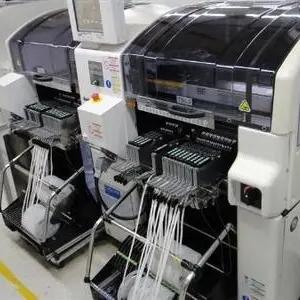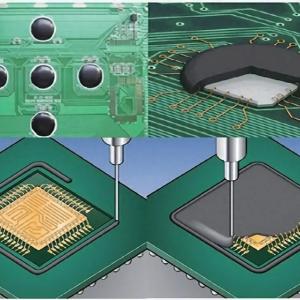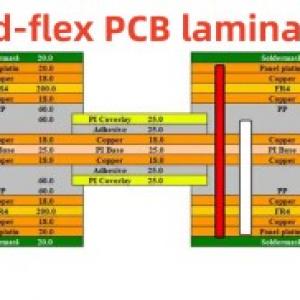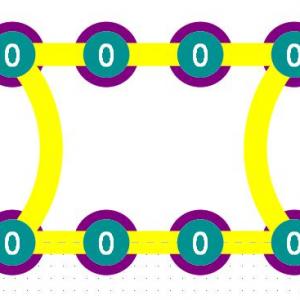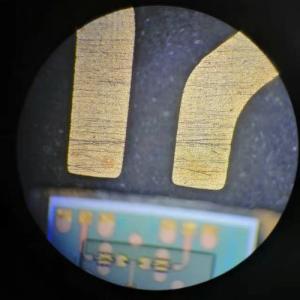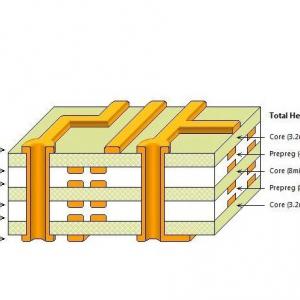What factors need to be considered for PCB design costs? How can I save on PCB design costs?
[Read More] To improve your knowledge of PCB boards, this article will introduce some of the factors that need to be considered for PCB board design costs.PCB board is also what we call integrated circuit board, through the PCB board, we can build a lot of more interesting small objects. To improve your knowledge of PCB boards, this article will introduce some of the factors that need to be considered for the cost of PCB board design. If you have an interest in PCB boards, you may wish to continue to read on with the editor.
First, the number of layers or stacks in the PCB design
As I know before, the more layers, the higher the cost. Of course, this is one of those factors that determine the price. These increases also take into account the size and type of material used by the manufacturer in their production.
This is the increase in cost in general terms.
1 to 2 layers: (35% to 40% increase in cost)
2 to 4 layers: (35% to 40% increase in cost)
4 to 6 storeys: (cost increase of 30% to 40%)
6 to 8 storeys: (cost increase of 30% to 35%)
8 to 10 storeys: (cost increase of 20% to 30%)
10 to 12 storeys: (cost increase of 20% to 30%)
This is understandable because we know that this increases the number of production steps (the lamination process). The logic here is that the more layers there are, the more time and resources are needed to complete the manufacturing process.
Second, the type of PCB surface treatment
The surface finish you choose for your PCB design will affect the cost. Although this is a secondary factor; nevertheless, it is still a factor. Some of the reasons you may choose one finish over another are that some are higher grade, or they have a longer shelf life.
Typical types of finishes (the finishes and their unique features are listed below).
HASL: provides better solderability
HASL-LF: provides better solderability
OSP: offers better solderability
immersion gold: offers better solderability and can be bonded to aluminium (Al) leads
immersion tin: provides solderability
ENIG: offers solderability, bonding to aluminium wire and contact surface
ENEPIG: better contact surface, solderability and solderability to aluminium wire
Electronic Au: Al and Au (gold) wire solderable with better solderability and contact surface
Third, the choice of materials used by manufacturers to produce PCBs
The first is obvious, as the type of manufacturing material used affects the cost of almost all products in each industry. For example, when it comes to car interiors, leather seats cost more than fabric or cloth. It is therefore understandable that the same principle applies to PCB manufacturing.
Also, as you may already know, typical PCBs are laminated with FR4 material, but this is not sufficient for PCBs used in high strength applications, for example in the fuel or aerospace industries.
The following are the factors that will influence your material selection process.
Thermal reliability: Typically, determine the temperature expectations for the PCB application. In other words, make sure that the temperature rating of the selected material falls within an acceptable range.
Temperature reliability: Again, this depends not only on how the material will function over a specific temperature range, but it must also do so within a controlled setting without overheating for an indeterminate period of time. Remember that any PCB (material) intended for use in a high temperature operating environment must pass this test.
Heat transfer: This requirement indicates the ability of the board to withstand high levels of heat without excessive transfer of said heat to connected or adjacent components.
Signal performance: As the name implies, this means whether the material can promote an uninterrupted electrical signal during each operating cycle. As you know, this is critical to PCB functionality.
Mechanical properties: This determinant focuses on the ability of the material to withstand the physical stresses foreseen in its application use.
Forth. Minimum alignment width and spacing
Ask any engineer and they will tell you that adequate trace width is necessary if current is to be carried on a PCB without overheating or damaging it. The determination of the trace width starts with a proper design (simulation).
Regardless of the board size, there is usually a correlation between trace width and current carrying capacity. Although other factors can affect current carrying capacity, the need for wider (thicker) traces will require more material and work. Again, this will equate to higher prices.
Fifth. Custom or special specifications
Custom or unique specifications can also increase costs. Such designs require higher production costs because the manufacturing process involves more work, materials and special tooling. So, before making any final design decisions, use simulation to get a better idea of your likely board costs and subsequent design requirements.
There are many cost considerations for PCBs. The advice here is to carefully consider each of these decision factors before making any budgetary decisions. Past experience has shown that the higher the size, number of layers or design requirements, the higher the cost required.
